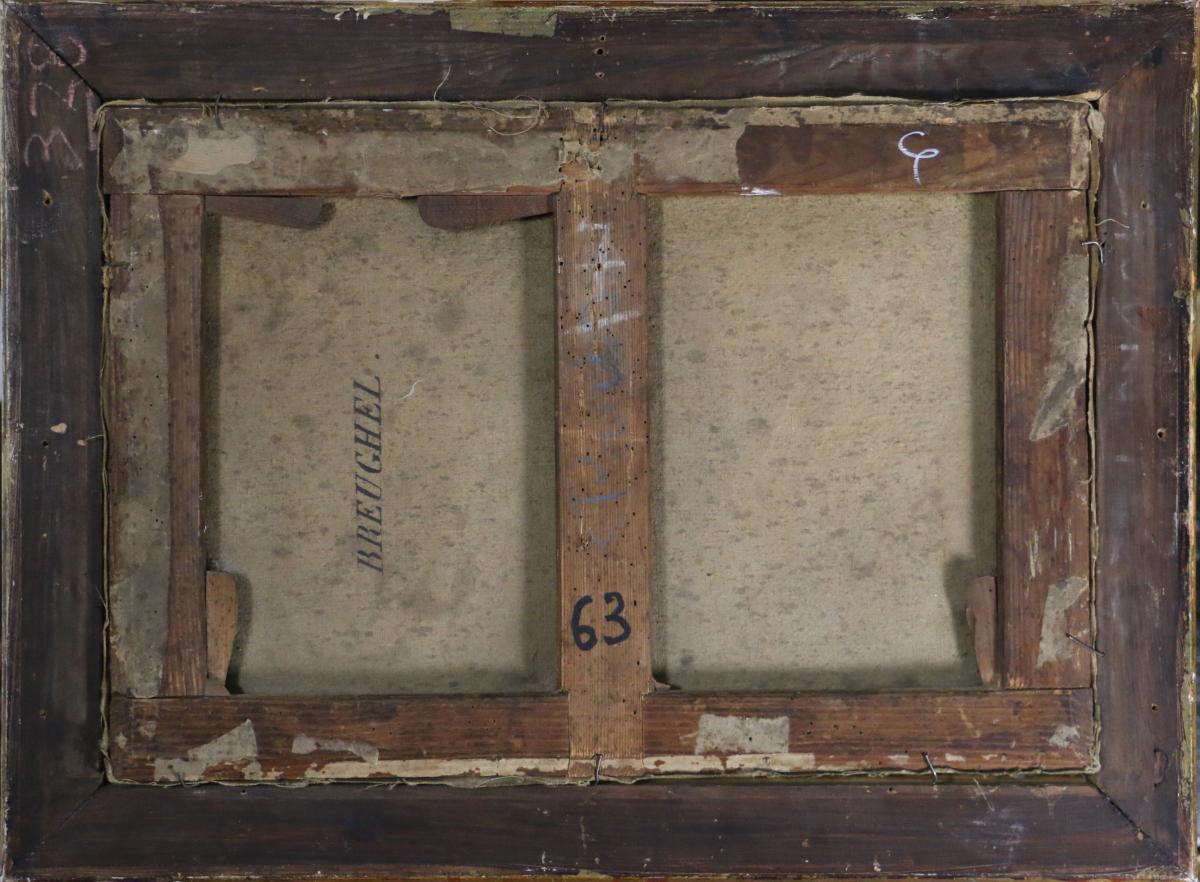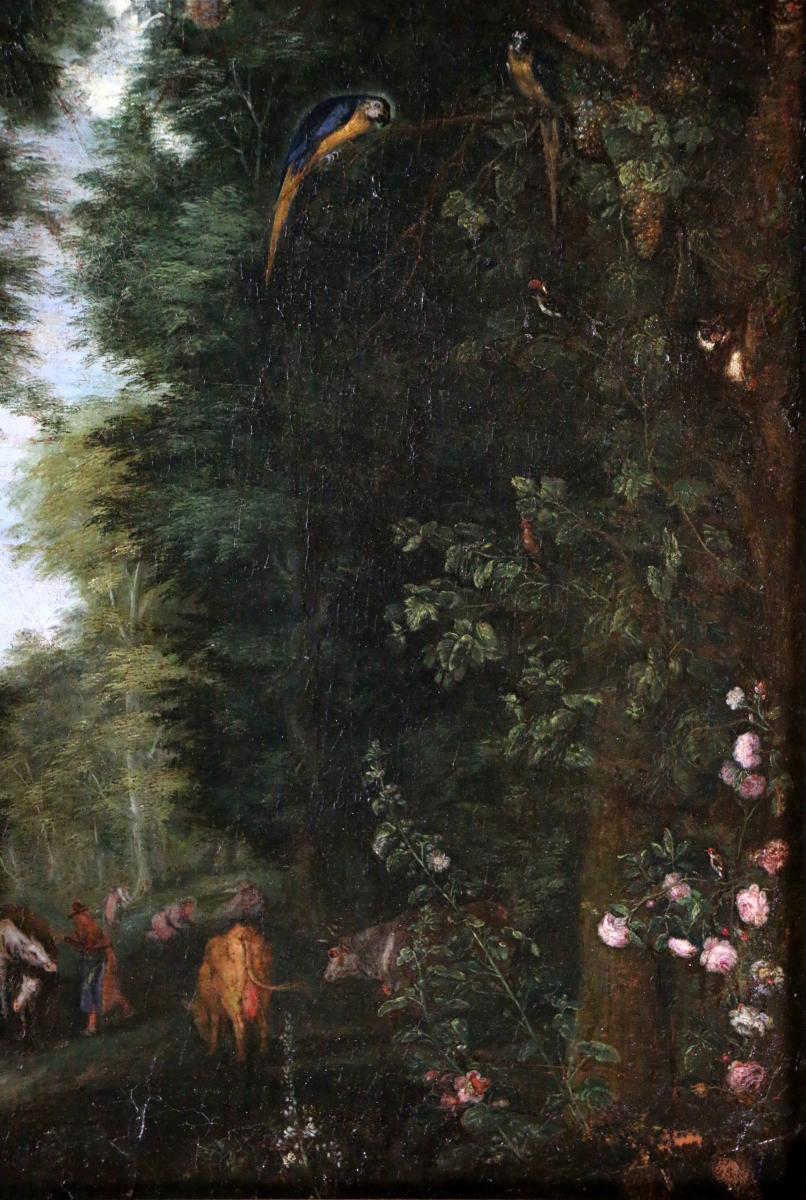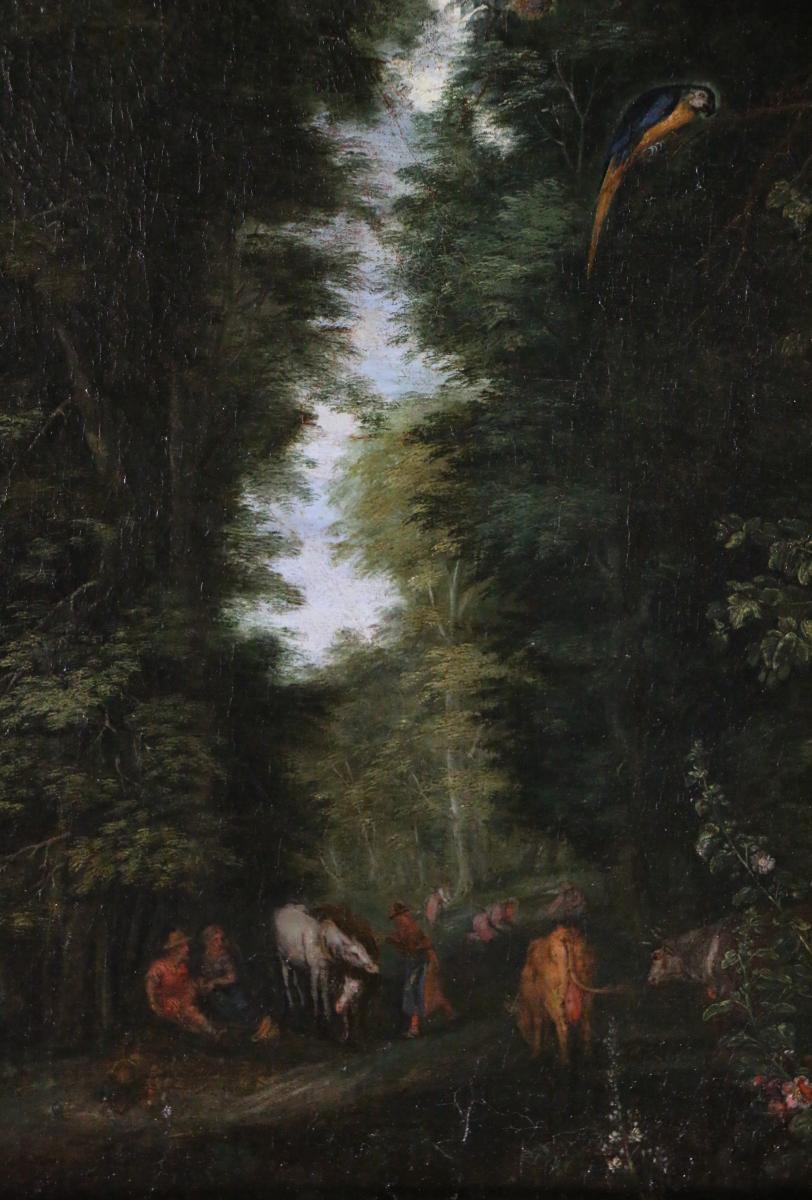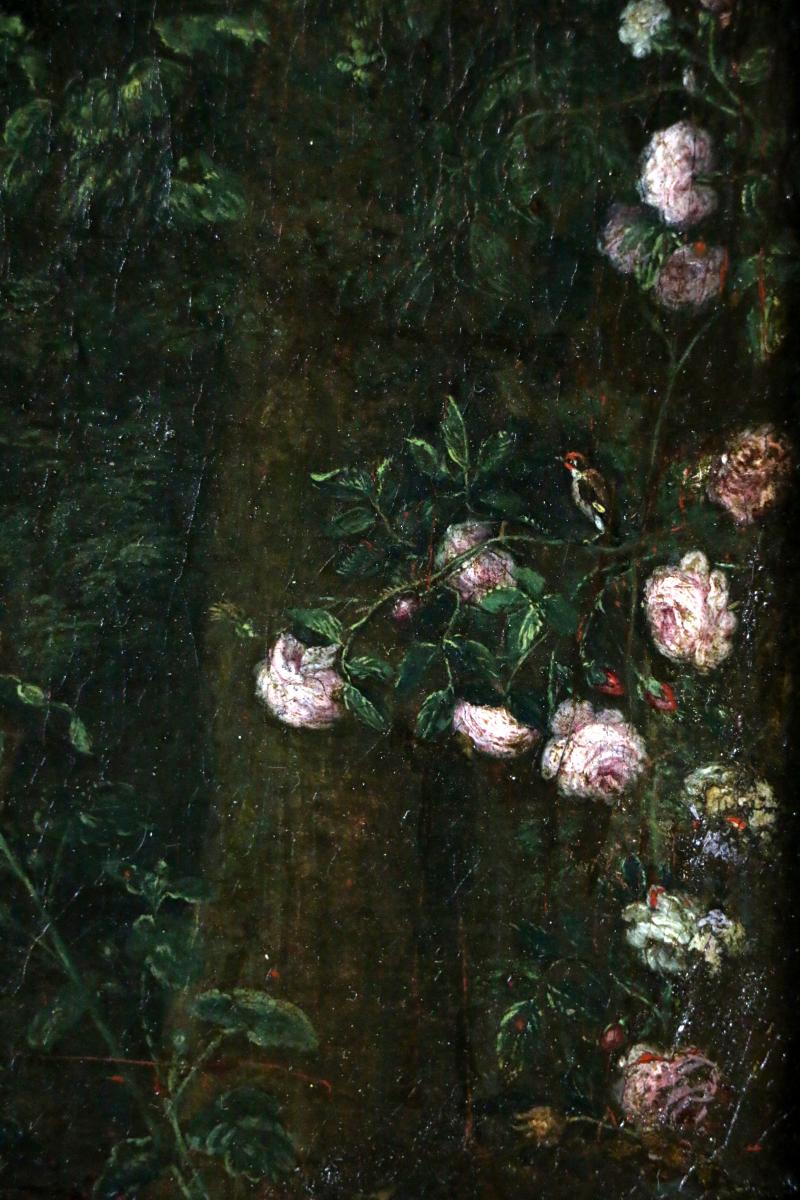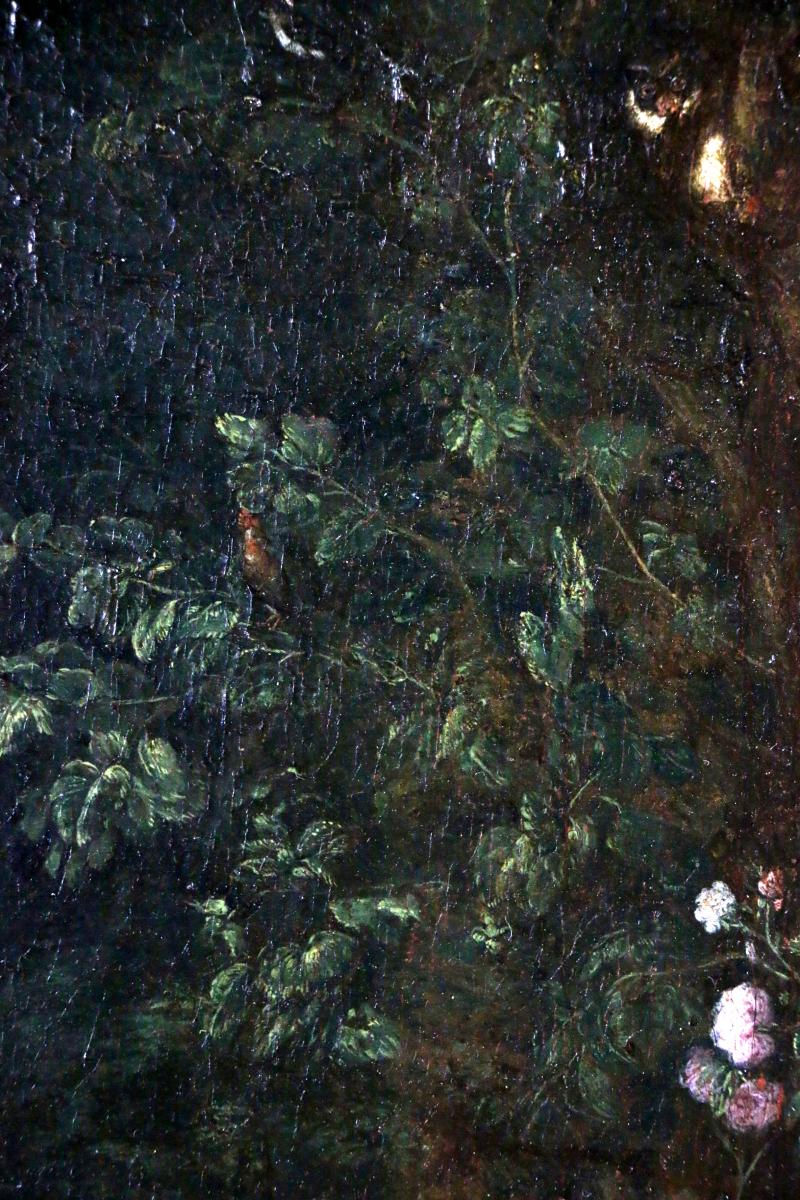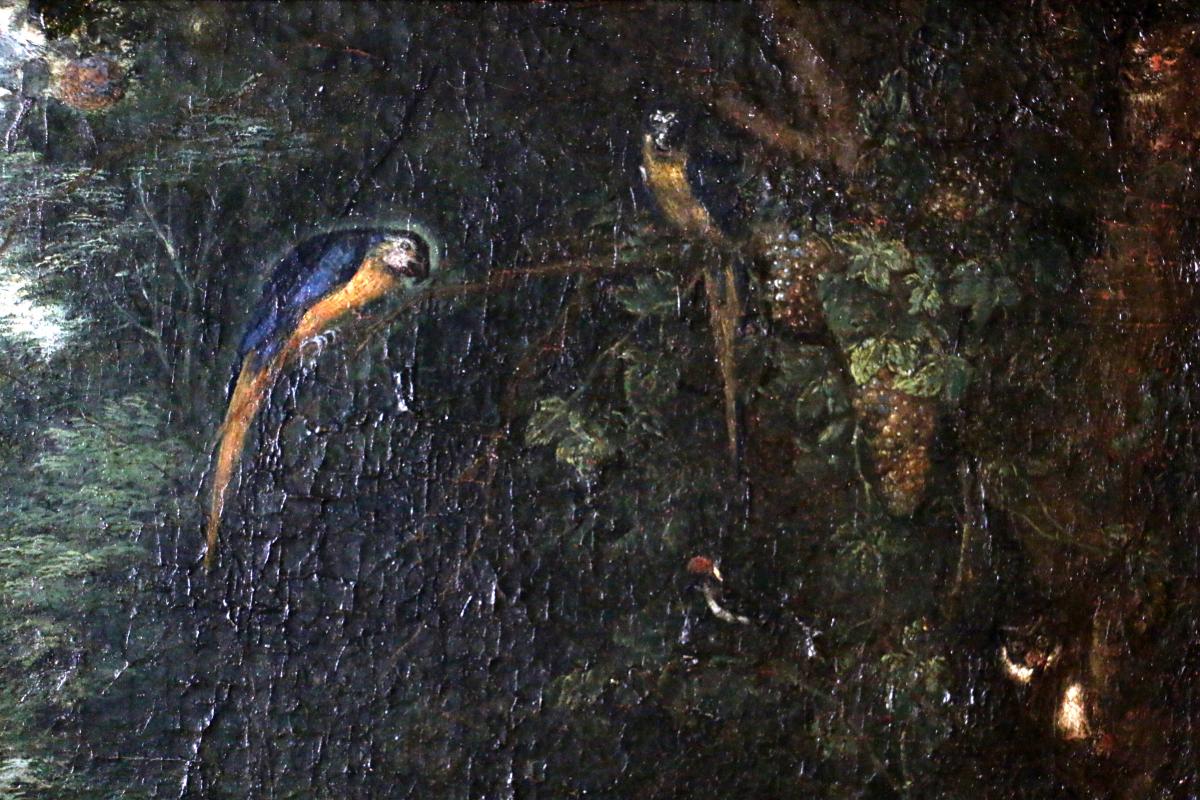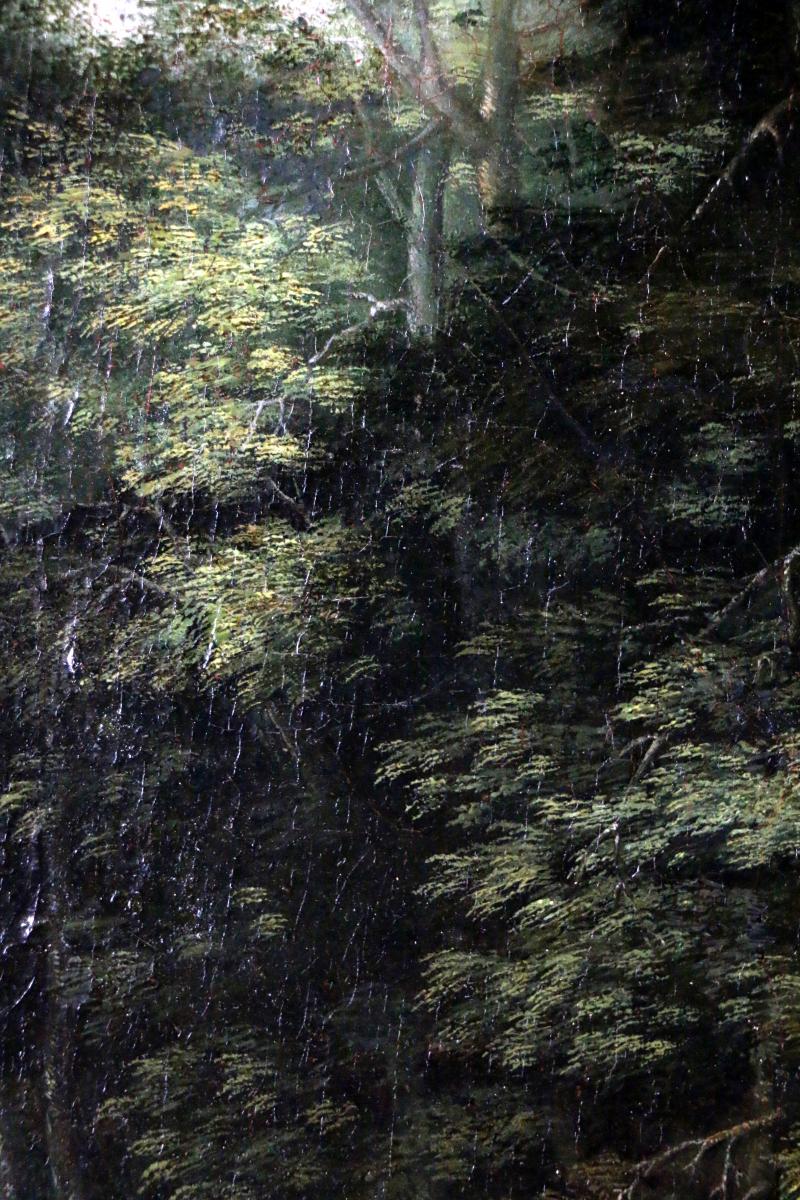"Flemish School Of The 17th Century-atelier De Jan Brueghel The Former Dit Brueghel De Velvet"
Flemish School of the 17th century-Atelier of Jan Brueghel the former said Velvet Brueghel Canvas 60 cm x 40 cm Frame 70 cm by 52 cm Beautiful landscape animated characters, still lifes, farm animals but also of birds that can be found in the representations of the terrestrial paradise of the same artist. You will also notice beautiful hollyhocks and what about the finesse of the different foliage ... Jan Brueghel the former Brueghel Velvet (1568-1625) Second and youngest son of Pieter Brueghel the Elder, he was born in Brussels a few months before the death of his father. He is firstly the pupil of his grandmother, Marie de Bessemers, widow of Pieter Coecke van Aelst, who takes care of him on the death of his father. She teaches him the miniature and the watercolor, which allows him, without doubt, to obtain a fineness, a delicacy and a special fluidity of the color. He also works with Peter of Goetking and has a fast reputation as a painter of flowers and fruits. He is the youngest brother of Pieter Brueghel the Younger. He adopts like him the spelling Brueghel. Brueghel then travels to several European countries, including Italy where he befriends patrons for whom he will continue to work after returning to the North. He also met in Rome with Paul Bril and Cardinal Ascanio Colonna, who offered him his patronage, and in Milan with Cardinal Frederick Borromeo. In 1608 he presented him with the still-life and animal painter Frans Snijders. Returning to Antwerp in 1596, he continued his training and married the daughter of Gerard de Jode, with whom he had two children, Jan Brueghel the Younger and Paschasia who later married Hieronymus van Kessel, father of the painter Jan van Kessel. In Prague, he discovered Dürer's drawings in 1604, from which he drew inspiration. Widowed, he remarries in 1605. Eight children will be born of this second marriage. Master of the Guild of painters of Saint-Luc in Antwerp, he collaborates in many paintings with Pierre-Paul Rubens who was his friends, Hendrick van Balen, Frans Snyders, Joos Momper, Frans II Francken and Sebastien Vrancx. David Teniers the Younger's father-in-law, Jan Brueghel had students such as Abraham Govaerts and Daniel Seghers. He is credited with many paintings of flowers, a genre in which he excelled, as well as biblical compositions, allegories, mythological scenes, landscapes, and several paintings of earthly paradise, works often painted on copper. But if he was a painter with bright colors, with a touch of flavor in his allegorical paintings (representing among others: Fire, Air, Water, Earth, Museum of Fine Arts of Lyon, 1610) with a representation Fine of flowers, animals, birds, objects, he was also one of the Flemish painters specialized in the exploration of the infernal regions (collections of Palazzo Colonna in Rome, 1590s). He died of cholera in Antwerp on January 13, 1625. One of his sons, Jan Brueghel the Younger (1601-1678), continued the tradition of painting flowers. 





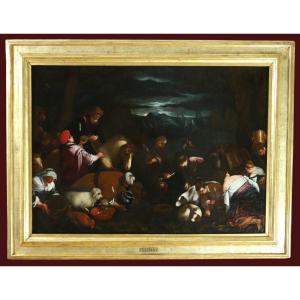
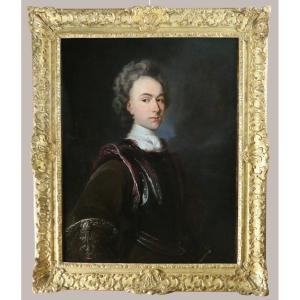



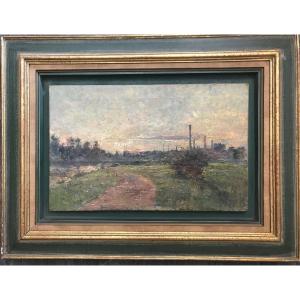

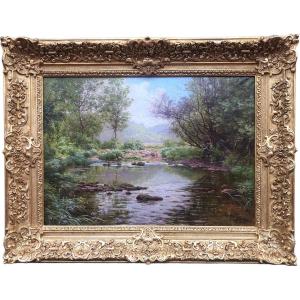

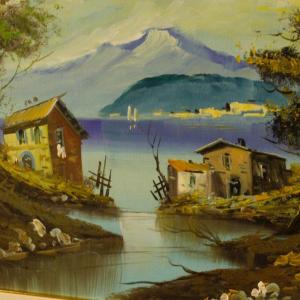




 Le Magazine
Le Magazine Rivista Artiquariato
Rivista Artiquariato TRÉSORS magazine
TRÉSORS magazine

